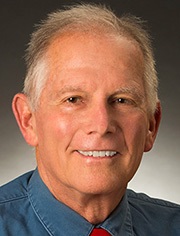Willie Mays was Mother’s Day gift to New York
On Mother’s Day in 1972, Willie Mays returned to New York.
The Giants’ hero from the 1950s was now a member of the Mets, and smacked his 647th career home run in the fifth inning of his first game back.
Mets owner and president Joan Payson, mother of five, and San Francisco Giants’ chief executive officer Horace Stoneham had agreed to a deal that would let Mays end his playing days in New York, where he first appeared as a rookie in 1951, and where he remained beloved. Returning to New York had already been a long-time goal for the “Say Hey Kid,” then 41-years-old.
Though Mays’ career was ending, donning a New York team uniform brought delight and nostalgia to the city’s National League fans, who felt abandoned after the Giants and the Brooklyn Dodgers uprooted to California in 1957. The Mets, whose first season was 1962, also provided a Big Apple alternative for confirmed Yankees haters.
Payson wanted Willie back with the Giants. Mets chairman Donald Grant acknowledged Payson’s sentimental attachment but also noted the opportunity for Stoneham to show generosity towards his fading player. Grant said “The club [the Giants] isn’t drawing and it’s down in the standings. He can say ‘I’ve done the greatest favor I can do for Willie. I’m sending him home where he wants to be. I’m sending him to the Mets.’”
Mays, at the press conference that announced his trade, confirmed Grant’s thought process. “When you come back to New York, it’s like coming back to paradise.”
In 1972, Mets fans were in mourning. The beloved Mets manager, Gil Hodges, died from a heart attack at age 47, a little less than a month before Mays’ arrival in Gotham. Hodges had led the Mets to their first World Series triumph in 1969; Mets coach and Yankees icon Yogi Berra took over for Hodges. Mays’ link to 1950s baseball in New York — often referred to as the “Golden Age of Baseball”— provided an emotional balm to the distraught Mets fans.
Sadly, the Mays-Mets love affair was doomed from the start. Mays and Berra were at odds because the aging outfielder took unauthorized time off and vanished without permission. Fans preferred to remember the fleet-footed, power hitting Mays, and not the slow, error-prone, weak hitting outfielder that growing old had turned him into.
On September 20, 1973, Mays announced his retirement on the “Today Show,” and said at age 42 and with a .211 batting average, baseball wasn’t any fun. Mayor John Lindsay declared September 25 “Willie Mays Day” and the Mets, in a tight pennant race, held “Willie Mays Night” for their game against the Montreal Expos. Among the 44,000 attendees were Joe DiMaggio, Stan Musial, Pee Wee Reese, Duke Snider and other Hall of Famers that were Mays’ peers in his peak years.
Before the game, the 24-time All-Star spoke briefly and modestly: “I never considered myself a superstar. I considered myself a complete player.” Mays didn’t play in his team’s 2-1 victory, and he rode the pine for the balance of the season, a big disappointment to the future first-ballot Hall of Fame inductee. As Mays said: “I came in playing and I’d like to go out playing.”
Mays got his wish when he got two hits in Game 2 of the World Series against the Oakland A’s, including one in the 11th inning. The A’s would go on to defeat the Mets 4-3.
Mays, now 93, struggling with glaucoma and living under a caretaker’ supervision, is baseball’s oldest living Hall of Famer, a bittersweet milestone.
Since 2020 ten Hall of Famers including Hank Aaron, Lou Brock, Bob Gibson, Al Kaline, and Tom Seaver have passed, all Mays’ contemporaries. Playing twenty-two seasons as an MLB center fielder with a record 7,095 putouts and 6,066 total bases, Mays ran more stylish and faster outfield miles than any player before or since.
From his millions of fans, “Say Hey” Willie!
Joe Guzzardi is a Project for Immigration Reform analyst who has written about immigration for more than 30 years. Contact him at jguzzardi@pfirdc.org.


Meet the Editor
David Adlerstein, The Apalachicola Times’ digital editor, started with the news outlet in January 2002 as a reporter.
Prior to then, David Adlerstein began as a newspaperman with a small Boston weekly, after graduating magna cum laude from Brandeis University in Waltham, Massachusetts. He later edited the weekly Bellville Times, and as business reporter for the daily Marion Star, both not far from his hometown of Columbus, Ohio.
In 1995, he moved to South Florida, and worked as a business reporter and editor of Medical Business newspaper. In Jan. 2002, he began with the Apalachicola Times, first as reporter and later as editor, and in Oct. 2020, also began editing the Port St. Joe Star.